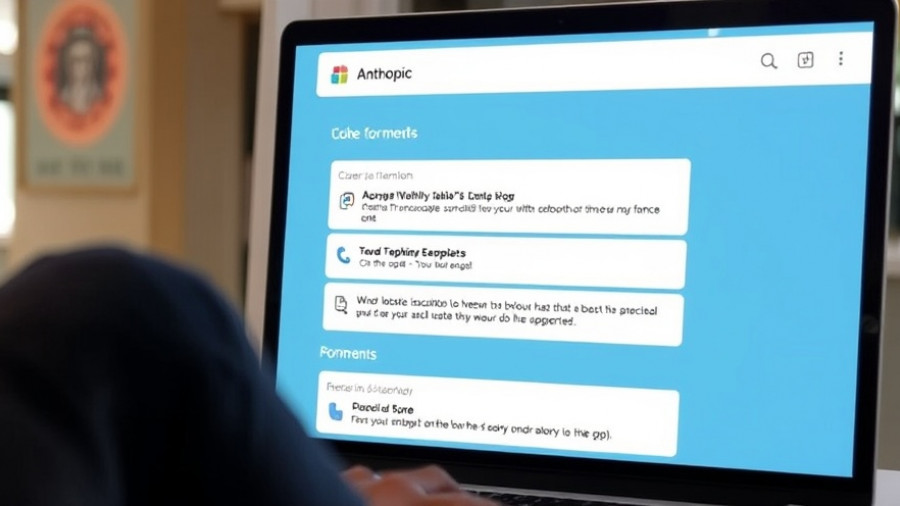
Understanding Dark Patterns in AI Consent
In a notable shift, Anthropic is facing scrutiny over its recent data policy changes for the Claude AI chat platform. The company's approach to obtaining user consent has invoked fierce discussions about ethical practices in technology. Users of consumer products, including Claude Free, Pro, Max, and Claude Code, are now required to actively opt out by September 28, 2025, if they wish to prevent the company from using their chat conversations—both new and resumed—for AI training. Notably, the retention period for this data is set to extend from 30 days to as long as five years, raising eyebrows over privacy implications.
The move reflects a growing trend among tech companies to re-evaluate user data utilization, but marks a concerning pivot towards employing dark patterns in user interface design. A dark pattern is a type of user interface that nudges users toward making choices that may not align with their best interests, often economically benefiting the service provider. Anthropic’s interface design features a prominently displayed black “Accept” button while the toggle for data-based AI training is small, pre-activated, and notably difficult to locate. This design choice effectively promotes rapid acceptance without user awareness.
Legal Ramifications for User Consent
These practices do not merely raise ethical questions; they also pose potential legal challenges. According to the General Data Protection Regulation (GDPR), user consent must be freely given and clear. This includes requirements that pre-checked boxes do not constitute valid consent. Experts argue that the way Anthropic has framed its consent process is likely to come under the scrutiny of European privacy regulators. The European Data Protection Board (EDPB) has already issued significant guidelines that condemn deceptive design patterns, emphasizing that users must be provided with informed and unambiguous consent options.
The Impact of Dark Patterns
Anthropic’s use of dark patterns mirrors practices seen in other tech giants. For instance, OpenAI has utilized a similar strategy where user data consent for the ChatGPT service is turned on by default. This trend raises a larger context of ethical responsibility among companies leveraging AI technologies. The implications for user trust are considerable, especially as public skepticism surrounding AI grows. If such patterns continue unchecked, companies may inadvertently create an environment where users feel they cannot safeguard their privacy.
Broader Implications for the AI Community
The use of dark patterns by firms like Anthropic brings forth a need for comprehensive discussions about consent in the rapidly evolving landscape of AI. There are implications beyond the immediate privacy concerns; from a societal perspective, how people perceive AI and its utility could be altered by such practices. If users feel their data is being mishandled or manipulated, it can stifle innovation in AI technologies as public confidence wanes.
What Can Be Done?
This situation signifies a critical juncture for developers, policymakers, and users. Advocates for ethical design argue that companies should prioritize transparency and ethical considerations in their user interface development. Encouraging a culture of informed consent can lead to improved user trust and a more responsible approach to artificial intelligence. The conversation must shift towards prioritizing user benefits while balancing corporate interests.
As AI technologies continue to evolve, both companies and regulators must proactively assess the ethical implications that arise. Users, for their part, should remain vigilant and actively question the design choices companies employ. Only through open conversations can the future of AI be shaped in a way that respects user autonomy and data integrity.
 Add Row
Add Row  Add
Add 




Write A Comment